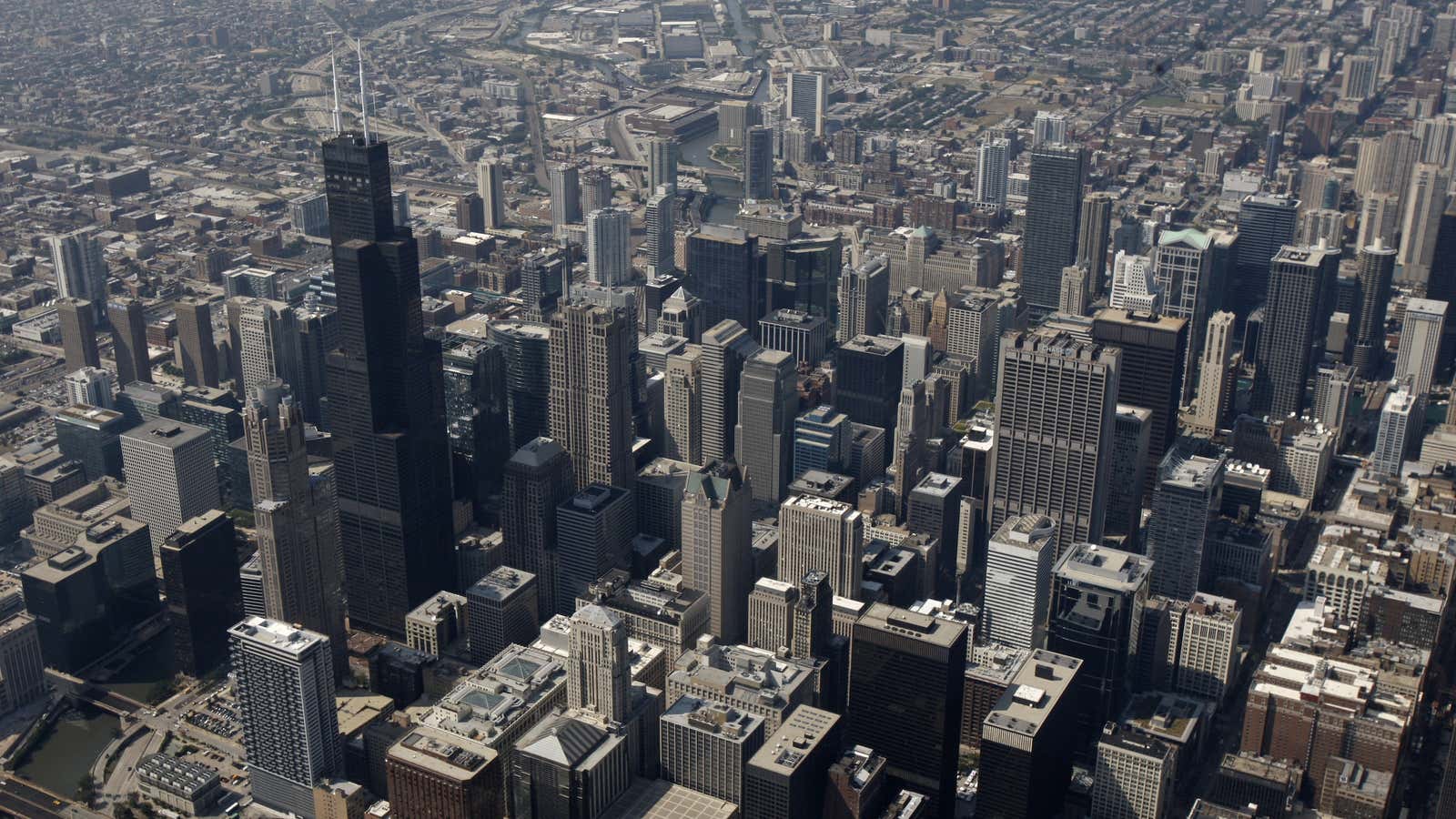Critics say the US presidential primary system is disproportionately influenced by early voting contests in Iowa and New Hampshire.
The influence wielded by these races is little more than a happy accident. New Hampshire only lost its first-state-to-vote status in 1972, when a lack of hotel rooms in Des Moines forced Iowa officials to move their election to the front of the pack. Nevertheless, Iowans and New Hampshirites often set the tone for the rest of the primaries: elevating winners, bestowing momentum, and winnowing out the weakest campaigns.
This gives a small fraction of the US population an exorbitant amount of power in selecting the future commander-in-chief. And neither of these states are particularly reflective of the national electorate, socially or economically.
But if you want a real understanding of what America likes in a president, look beyond Iowa and New Hampshire to the great state of Illinois.
Along with California and New York, Illinois almost always casts its 21 electoral votes for the Democratic candidate in general elections. That said, internally, Illinois is quite diverse. It recently elected a Republican governor, boasts one of the country’s most notable centrist Republican senators, and its state legislature bursts with conservative lawmakers—representing a constituency anchored in the agricultural south; far from bustling, blue Chicago.
Illinoisans have also selected the eventual party nominees every election year since 1988, when Democrats opted for their congressman, Paul Simon, over Massachusetts governor Michael Dukakis.
Illinois is also a microcosm of the nation. Quartz looked at the demographic data for all 50 US states and compared them to national averages. Illinois has by far the most in common with the country at large, according to 2014 census data:
(*According to the Pew Religious Landscape survey.)
Fewer Illinoisans receive Social Security and food stamp/SNAP benefits than the average American, and a smaller proportion live under the poverty line. That said, the unemployment rate is almost a full percentage point higher than the national average.
Points of particularly significant similarity include the median age, and percentages of adults aged between 20 and 34 years (major Bernie Sanders supporters) and 65 or older (Hillary Clinton’s camp). It’s also worth noting how startlingly parallel the racial demographics break down—Illinois’s African-American, Latino, Asian-American, and other minority communities are quite proportionate to their numbers nationwide.
So for a clear reading of the nation’s temperature, tune in for tonight’s primary results. According to Real Clear Politics polling averages, Donald Trump currently leads Ted Cruz by 6.5 points, and Hillary Clinton leads Bernie Sanders by 2.3.
